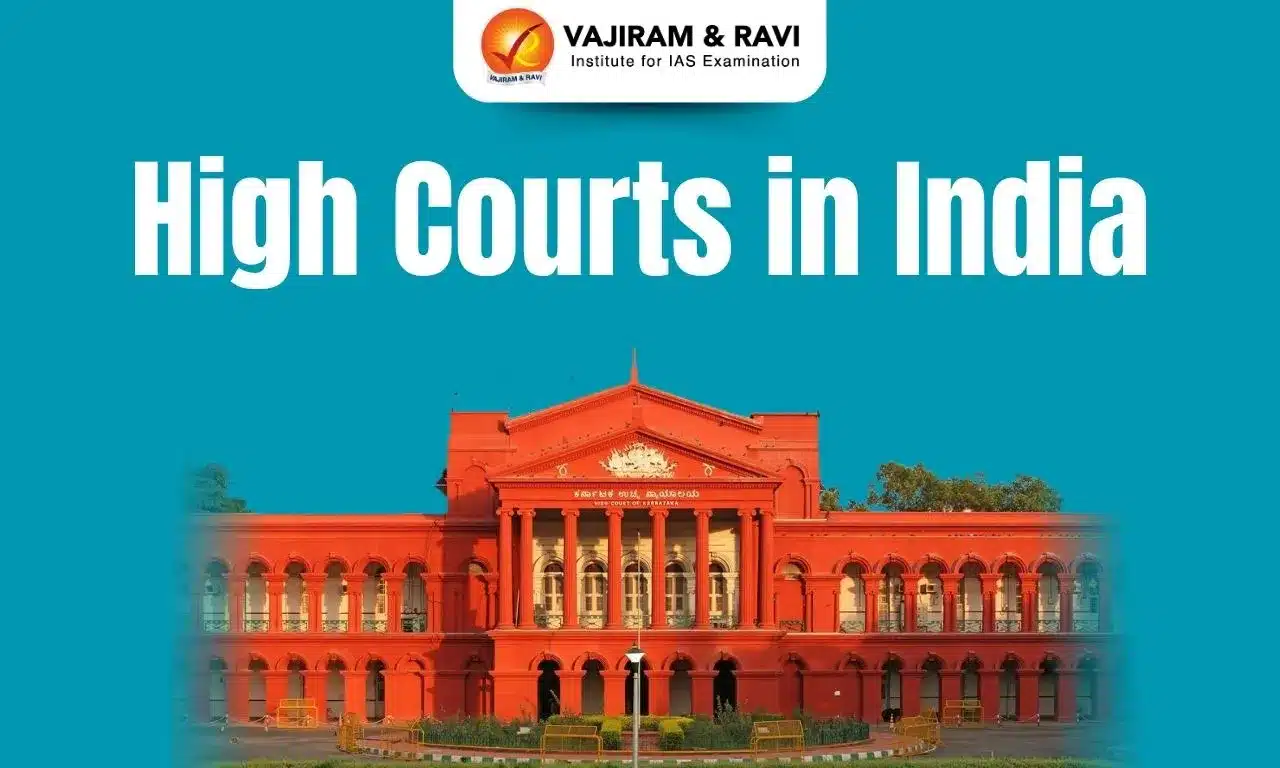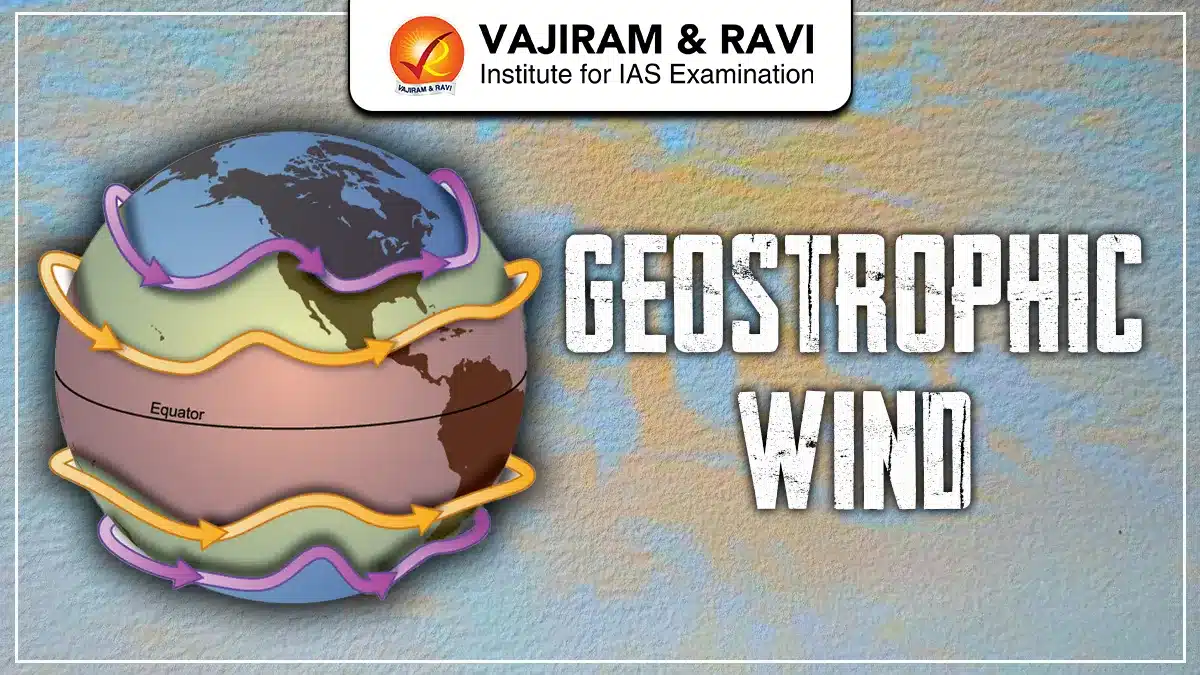High Courts in India: In India’s legal framework, High Courts hold a prominent position as the highest courts of appeal for the states and Union Territories they serve. As per Article 214 of the Constitution, every state or Union Territory is mandated to establish at least one High Court, ensuring access to justice across the country. Additionally, Article 231 allows for the creation of a single High Court that serves multiple states, offering a more streamlined approach to legal proceedings. As of now, there are 25 High Courts in India, each contributing to the nation’s judicial integrity.
High Courts in India
High Courts in India are the highest judicial authority in each state or Union Territory, overseeing subordinate courts. According to Article 231 of the Constitution, while each state generally has its own High Court, some states share a single court. India has 25 High Courts, with the Calcutta High Court, established in 1862, being the oldest, alongside Bombay and Madras High Courts.
The Telangana and Andhra Pradesh High Courts were established in 2019. Each High Court is headed by a Chief Justice, with additional judges appointed by the President of India. The Madras Law Journal, started in 1891, reports judicial decisions.
Also Read: List of Education Ministers
List of High Courts in India
Below is a List of High Courts in India, along with their respective years of establishment:
| List of High Courts in India | |||
| Name | Year | Territorial Jurisdiction | Seat |
|
Kolkata |
1862 |
West Bengal, Andaman & Nicobar Islands |
Kolkata ( Bench of port Blair) |
|
Bombay |
1862 |
Maharashtra, Dadar, & Nagar Haveli. Goa, Daman Diu |
Mumbai (Bench at Panaji, Aurangabad and Nagpur) |
|
Chennai |
1862 |
Tamil Nadu & Pondicherry |
Chennai (Bench at Madurai) |
|
Allahabad |
1866 |
Uttar Pradesh |
Allahabad (Bench at Lucknow) |
|
Karnataka |
1884 |
Karnataka |
Bengaluru (Bench at Dharwad and Gulbarga) |
|
Patna |
1916 |
Bihar |
Patna |
|
Jammu & Kashmir |
1928 |
Jammu & Kashmir |
SriNagar & Jammu |
|
Punjab & Haryana |
1947 |
Punjab, Haryana, Chandigarh |
Chandigarh |
|
Guwahati |
1948 |
Assam, Nagaland, Mizoram and Arunachal Pradesh |
Guwahati (Bench at Kohima, Aizawl and Itanagar |
|
Orissa |
1948 |
Orissa |
Cuttack |
|
Rajasthan |
1949 |
Rajasthan |
Jodhpur ( Bench – Jaipur) |
|
Madhya Pradesh |
1956 |
Madhya Pradesh |
Jabalpur (Bench –Indore , Gwalior) |
|
Kerala |
1958 |
Kerala & Lakshadweep |
Ernakulam |
|
Gujarat |
1960 |
Gujarat |
Ahmedabad |
|
Delhi |
1966 |
Delhi |
Delhi |
|
Himachal Pradesh |
1966 |
Himachal Pradesh |
Shimla |
|
Sikkim |
1975 |
Sikkim |
Gangtok |
|
Chhattisgarh |
2000 |
Chhattisgarh |
Bilaspur |
|
Uttarakhand |
2000 |
Uttarakhand |
Nainital |
|
Jharkhand |
2000 |
Jharkhand |
Ranchi |
|
Tripura |
2013 |
Tripura |
Agartala |
|
Manipur |
2013 |
Manipur |
Imphal |
|
Meghalaya |
2013 |
Meghalaya |
Shillong |
|
Andhra Pradesh |
2019 |
Andhra Pradesh |
Amravati |
|
Telangana |
2019 |
Telangana |
Hyderabad |
Appointment of Judges in High Courts
The process of appointing judges to a High Court in India involves a multi-step procedure, ensuring that the most qualified individuals are selected. The Chief Justice of a High Court is appointed by the President of India, who consults both the Chief Justice of the Supreme Court and the Governor of the respective state.
Other judges are appointed based on consultations between the President, the Governor, and the Chief Justice of the High Court. This collaboration ensures that judicial appointments are both transparent and uphold the integrity of the judicial system.
Qualifications for High Court Judges
To qualify for a judge’s position in a High Court, an individual must meet the following criteria:
- Citizenship: The candidate must be an Indian citizen.
- Experience: The candidate should have served as an advocate in one or more High Courts in India or held the position of a judge in subordinate courts in India for a minimum of 10 years.
These requirements ensure that only highly experienced legal professionals are considered for the esteemed position of High Court judge.
Tenure of High Court Judges
Initially, the retirement age for High Court judges was set at 60 years. However, this was extended to 62 years in 1963 through the 15th Amendment to the Constitution, recognizing the value of experience in the judiciary.
Removal of High Court Judges
A High Court judge may vacate their office under several circumstances. If a judge wishes to resign, they submit their resignation letter to the President of India. Additionally, a judge’s office will be considered vacated if they are appointed to the Supreme Court or transferred to a different High Court.
In rare cases, a High Court judge can be removed from office. This can happen if both Houses of Parliament pass a motion against the judge with an absolute majority and a two-thirds majority of the members present and voting, when sitting separately. The final decision is made by the President of India.
Salary of High Court Judges
Judges of the High Court receive a substantial salary in recognition of their important roles. The Chief Justice of a High Court is entitled to a salary of ₹280,000 per month, while other judges earn ₹250,000 per month.
Jurisdiction and Powers of the High Court
The High Court of India holds a range of key powers and jurisdictions, as outlined below:
- Issuance of Writs: Each High Court is empowered to issue writs such as habeas corpus, mandamus, prohibition, quo warranto, and certiorari. These writs are vital tools for safeguarding fundamental rights and addressing other legal matters.
- Supervisory Authority: High Courts maintain supervisory authority over all lower courts and tribunals within their jurisdiction. This power ensures proper administration of justice and accountability at the state level.
- Case Transfer Power: If a High Court determines that a case pending in a subordinate court involves a significant constitutional question, it can withdraw the case. The High Court may either directly resolve the case or provide a ruling on the constitutional issue, allowing the lower court to continue with the case in line with the High Court’s judgment.
- Role in Judicial Appointments: The High Court plays a crucial role in the judicial appointment process. The Governor consults the High Court regarding the appointment, posting, and promotion of District Judges, as well as the recruitment of other members of the State Judicial Service.
- Control Over Subordinate Courts: The High Court exercises control over district courts and their subordinates, including authority over promotions, transfers, and granting leave for judicial officers below the rank of District Judge.
Last updated on January, 2026
→ Check out the latest UPSC Syllabus 2026 here.
→ Join Vajiram & Ravi’s Interview Guidance Programme for expert help to crack your final UPSC stage.
→ UPSC Mains Result 2025 is now out.
→ UPSC Notification 2026 is scheduled to be released on January 14, 2026.
→ UPSC Calendar 2026 is released on 15th May, 2025.
→ UPSC Prelims 2026 will be conducted on 24th May, 2026 & UPSC Mains 2026 will be conducted on 21st August 2026.
→ The UPSC Selection Process is of 3 stages-Prelims, Mains and Interview.
→ Prepare effectively with Vajiram & Ravi’s UPSC Prelims Test Series 2026 featuring full-length mock tests, detailed solutions, and performance analysis.
→ Enroll in Vajiram & Ravi’s UPSC Mains Test Series 2026 for structured answer writing practice, expert evaluation, and exam-oriented feedback.
→ Join Vajiram & Ravi’s Best UPSC Mentorship Program for personalized guidance, strategy planning, and one-to-one support from experienced mentors.
→ UPSC Result 2024 is released with latest UPSC Marksheet 2024. Check Now!
→ UPSC Toppers List 2024 is released now. Shakti Dubey is UPSC AIR 1 2024 Topper.
→ Also check Best UPSC Coaching in India
High Courts in India FAQs
Q1. How many high courts are there in India 2023?+
Q2. Which is the newly constituted High Court in India?+
Q3. Which state of India does not have its own High Court?+
Q4. Which is the biggest High Court in India?+
Tags: high courts in india

















